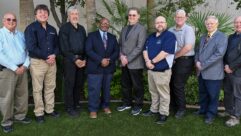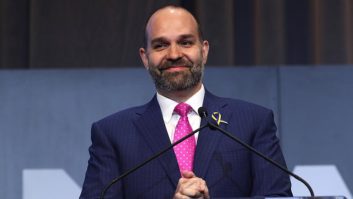
The author is owner of WGTO(AM) and W266BS in Cassopolis, Mich. His commentaries are a regular feature at radioworld.com. Here he comments on this week’s story “Expanded-Band Owner Objects to AM Surrender Plan”.
I have been dealing with the FCC for more than a quarter century, and one thing my late FCC attorney Lauren Colby taught me well: Be straight with the FCC, lack of candor will sink you every time.
Well, we as broadcasters must expect the same from the FCC. When they say something, we should believe it to be truthful and we expect them to stay true and enforce their orders.
The FCC was as clear as spring water on the expanded-band issue.
Only those stations that THEY scored as the worst interferers could apply to move into the new band. Following that, the FCC would entertain other plans to populate the band.
Well, the “other” plans never came to light and some of the original permit holders have made out like bandits for two decades. The FCC lists 25 that still hold both their old and new licenses.
The FCC order of 1997 was very clear: If granted a permit owners could under NO circumstances operate both the new and the old station for more than five years. No ifs ands or buts. It was PLAIN AND CLEAR!
[See a 1997 FCC “AM Expanded Band Fact Sheet”]
Some of the owners followed the rules and chose the new station or the old station after five years, and turned in one license. Now I bet they feel like suckers.
Some owners who have held on to both stations have used creative arguments. Keeping both stations was in the public interest as some companies tried to justify selling the old or new station to a minority group. Some of the arguments are very persuasive but do not conform to the original 1997 order, and the FCC did not buy those arguments in most cases.
Some of the nation’s larger broadcast companies have been involved in some of these attempts to wheel and deal on the expanded band and yes some new and welcomed service has been provided to targeted audiences as a result. But the same thing could have been done by opening the expanded band to new applicants along with moving so-called high-interfering stations.
The FCC messed this up from the beginning. Why did they allow the expanded-band station to be run as a separate program entity? They could have put real teeth in the order by forcing both stations to simulcast their programming for the full five years. By forcing simulcast like they do with translators, the FCC would have prevented the operators from in effect running two different stations and setting up a situation where it would always be economically difficult to give one up. The FCC should also have made cancellation of the standard-band station automatic after five years unless the owner petitioned to cancel the expanded-band station instead.
So while lawyers will make money writing arguments to allow owners to keep both stations on air or sell one, the truth of the matter is simple, the FCC lacked candor in dealing with the band and those who could or would move into it.
The only way the FCC can deal with this now is to turn the clock back and set a short deadline using the original language. Surrender one or the other.
It’s a tough move but the owners were warned and the free ride should be over. Once that is done the FCC can as originally promised look to fair and equitable ways of adding a limited number of new stations based on an application window.
Related:
Expanded-Band Sunset Rule Appealed (2006)
A Closer Look: The AM Band Revitalization Order (2015)
A Tale of Three Expanded-Band Stations (2016)












